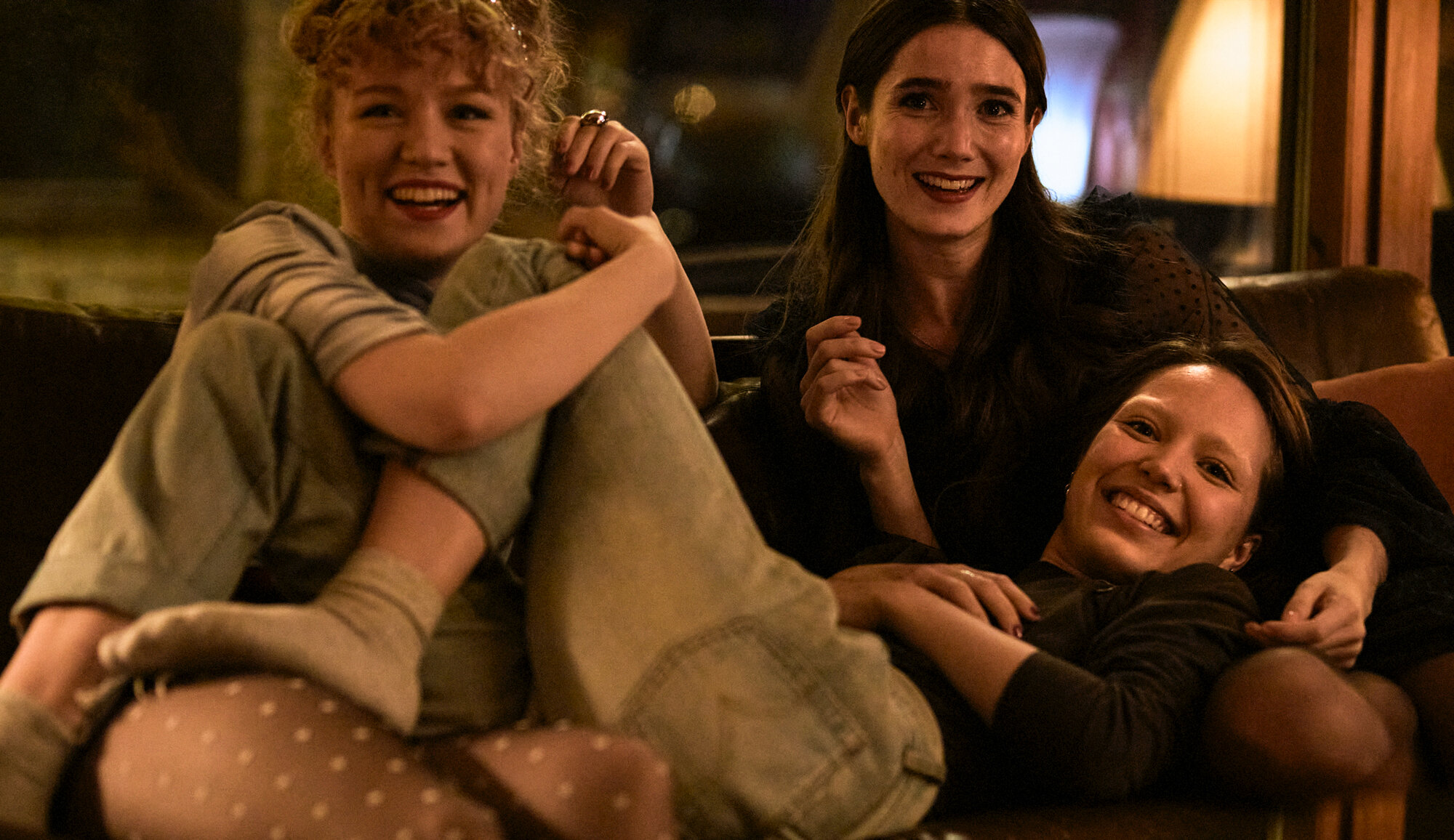Alli Haapasalo had been a world away from her native Finland when she first learned of what co-writers Ilona Ahti and Daniela Hakulinen were cooking up with what would become “Girl Picture,” and as she was on the cusp of graduating from NYU Film School, she might’ve felt a world away from its characters, a trio of young women counting down the days until leaving high school and having the autonomy they long craved. Still, there was something instantly relatable about Mimmi, an outsider eager to spread her wings when she’s no longer forced to take gym classes or work at a smoothie stand, her friend Rönkkö, who is feeling out her sexuality, and Emma, a championship-level ice skater who could actually benefit from a distraction from her single-minded focus on landing triple lutzes at Nationals.
Undoubtedly what was ultimately irresistible to Haapasalo has made it to the screen in “Girl Picture,” her third feature though she’s been developing it before making her first, and while Mimmi (Aamu Milonoff), Rönkkö (Eleonoora Kauhanen) and Emma (Linnea Leino) are works in progress, the film they inhabit is anything but, picking up the Audience Award earlier this year at the virtual Sundance Film Festival. Full of energy with charm to spare, the coming-of-age tale sees its heroines fearless for the most part, except when it comes to letting someone else into their lives. While Mimmi and Rönkkö are already thick as thieves, both awkwardly open themselves up to new relationships and potential heartbreak as Emma skates into Mimmi’s life and Rönkkö tries out a variety of partners to see what she actually wants from one. True connection may be hard to come by, but Haapasalo and crew illuminate how it’s worthwhile for all to put themselves out there on the promise of a bond while growing into who they are as individuals, feeling appropriately distinctive aesthetically as it coalesces into a satisfying whole.
After a festival run with stops around the world in Berlin, BFI Flare in London and Sydney, “Girl Picture” is arriving for a full-fledged theatrical run in America where there would be few better ways to cool off this summer and Haapasalo spoke of how she found it refreshing to have such a large canvas to tell such a story, developing the film’s savvy structure set across three consecutive Friday’s in the characters’ lives and how the #metoo movement opened the door for films like these, in spite of having no direct connection to it.
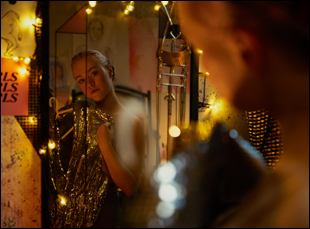
It started in 2014 and what got me interested was you could already tell from the treatment that the writers Ilona and Daniela sent me that they were doing something different. Even if the structure of the film wasn’t there, the characters were, and what really got me interested was the ability to do a very, very female-driven film, but not just one woman who will then represent all women, but these three very different girls.
I wonder how foundational that may have been because all of them represent different things and come together for this full experience, which probably sounds easier said than done.
That was really difficult. On one hand, you have the A plot with Emma and Mimmi and you have a B plot with Ronkko’s quest for pleasure, but then Mimmi and Ronkko are the best friends, so how do you tie that [together] and then there’s also the subplot of Emma’s ice skating and the competition, so ahhh! [laughs] It was a big mess for a really long time and all the different commentators were like, “Oh, I want some more of the plot A. Ronkko totally took me in this draft, so can we just please focus on her?” But then we discovered the structure of three Fridays [where] you can’t show anything else. You can only show scenes that happen that Friday and of course the last Saturday, so that was a really big help and the balance was easy to find and we just let the audience fill in the blanks.
From what I understand, breaking down the script was a real collaborative process. What was it like bringing the actresses into it?
They were very involved [since] I wanted to make sure that they would feel comfortable taking ownership for the characters. I don’t want actors to come in and just deliver the lines and go home. I wanted them to really feel like they own their characters and we not only did a lot of rehearsals, creating the characters and trust between ourselves, but we also spent a lot of time just figuring out what does female friendship look like? How do people who have been friends for a long time act with other physically? Teenage girls have this very specific intimacy where they’re easily physically intimate with each other in a way that’s quite specific and unusual in a way. They can braid each other’s hair or lie on top of each other in funny positions, but you can only do that if you share that kind of intimacy, so we even rehearsed that.
They [also] took a great interest in their appearances. One of the first things we asked of Eleonoora, who plays Ronkko, was “Is it okay to show your acne?” Because she had quite full-blown acne when we started and she was all for it. She’s like, “I wish I had seen that on film, so absolutely, I want everyone else to see it” and we did a lot what you’d call costume play. Before we had any costume fittings, we just had them try on a hundred different outfits, just to look for the habits of the characters and it was a very immersive, inclusive process.
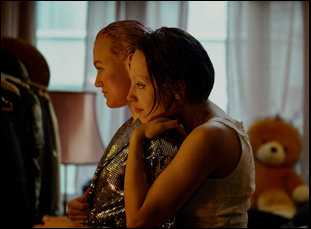
I think very early on, we decided we weren’t even going to try. [laughs] We definitely didn’t try to be on trend with anything. The Finnish language that they speak doesn’t feature any trendy expressions, so we stayed away from that and phones are in a very small role, so it doesn’t immediately look outdated, but the long process [to make the film] was actually quite beneficial in one sense, which is that we had to unlearn our own bias too about things. This script started before #MeToo and nobody was interested before #MeToo. I sent the first draft to three producers, all women and I will never forget the first feedback, which was, “I don’t see what’s special about the story.” Post #metoo, you can’t say that anymore because at least you have to ask yourself, why do I not think this is special? Of course, it can be a crappy story. That’s one thing, but if you can’t find it important or worth telling or big enough to be a movie, you have to ask where you’re coming from with that. I had to unlearn a lot of my own bias. At one point, we had a coming out element in the story and we threw that out the window. We had a sleazy guy who gets these girls into danger like in 90 percent of movies where women are active and independent — threw that out the window. We had to actively look at what are we conditioned to? Luckily, we did have that long process where we could get rid of that old fashioned attitude.
Another way this feels fresh is how it’s always moving. How did that sense of movement come in?
That’s one of my favorite things because I like to work from the abstract to the concrete, so I started from trying to figure out what does the teenage experience mean? And one of the key elements to me was movement. I kept repeating this mantra that movement was a norm in a teenager’s life and moments of stillness, not just movement, but abrupt changes of tempo in that movement, are a special effect, so you can go from very, very hectic to quiet and then the quiet can be broken in an instant. Those basically became central pillars of our aesthetic strategy. Of course, movement resonated well with the [cinematographer] Jarmo Kiuru because that’s one of his main tools [along] with lighting he’s a magnificent camera operator, and he’s done dance films before this, so he was really able to get into the movement.
And Jarmo and I are prep people, so we like to have a very specific camera method that we are leaning on in everything. We can never just wing it. Of course, when you’re meticulous with the method, you can also wing it inside it, but it really helps us to think methodologically, so [we had a] three-tier method [where] we had a level one, an intimate coverage of either individual people or it could be a two-shot too, but it was a more subjective camera angle and footage of an individual person and their emotional experience. Then level two was the group [shot], so camera is holding back, almost documentary style following the action and one of the big mantras there was the camera is always there for the actor, the actor is never there for the camera, so they got to do what they wanted to do and the camera is following them. And then there was level three, which we’d call iconic or, if you will, God’s eye, which would take a step back and put things into perspective, maybe bring a more poetic or cinematic level to scenes. For that level, one of my big references was American photographer Justine Kurland, an amazing photographer – and actually, the title “Girl Picture” is a little bit an homage to her [since] she has a wonderful series of photographs called “Girl Pictures” that I encourage people to look at. They’re just beautiful, beautiful portraits of teenage girls in very iconic form.
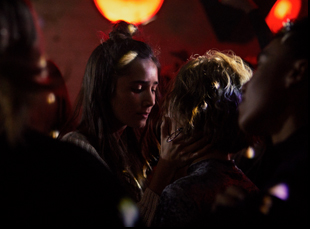
It was amazing. I’m so proud of them. Like can you believe Eleonoora was 20 when we shot this and like you said, she had never done an on-camera role? She was a ballet dancer and she’s done musical theater, so she’s not in any way shape or form afraid of attention or being the center of it, but she’s still so natural and the first day of shooting, she’s asking me like what does master take mean? And I’m like, “Ah, right, I didn’t even think about explaining these things to her,” but that didn’t affect her performance at all. She’s a complete pro, as if she’s been born in front of the camera. And Linnea, she’s like Emma in her personality – you could see this is a girl that will only come home with straight As, and I was a hundred percent sure she could deliver. She had a really good coach, but to be as good a skater as she was in three months? Yeah, how amazing that they did this.
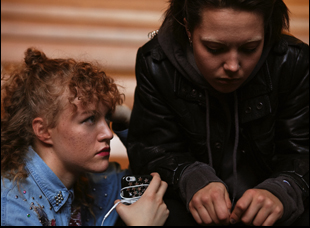
From this point of view now in August, it’s weird to look back to Sundance because I was at this hotel in Helsinki in a Utah time zone, which is nine hours behind Finland, so I’m awake when no one else is and the hotel is empty because of COVID, and nobody’s traveling. It’s the middle of the winter and it’s dark and you can’t gauge an audience reaction at all. I was so sure after the premiere that it was like, “Okay, people saw the film, and it’s forgotten.” The next morning, I was feeling this director’s depression, [thinking] “Here I am in the middle of nowhere having my coffee in Helsinki and I had no idea how it had been received.” Cut to eight months later and all this audience feedback and all these festival tours, it’s hard to fathom.
I’m extremely grateful to Sundance for giving the validation for the film for this all to happen, but even more so for the audience. I’m just so happy that they took it as their own because it’s a small foreign language film and it looks like a little documentary and they took it to heart. I’m just so happy this is happening to a film called “Girl Picture” about three girls on three Fridays and that the world is ready to embrace a film like that. It’s not like girls have been the cinematic topic that the world cares about. On the contrary, the world has always looked down on girls, so I’m just so happy that they’re taken seriously and that people are seeing the girls and that they’re seeing themselves. People are saying they feel seen, so that feels good.
“Girl Picture” opens on August 12th in New York at IFC Center and in Los Angeles at the Laemmle Royal.




